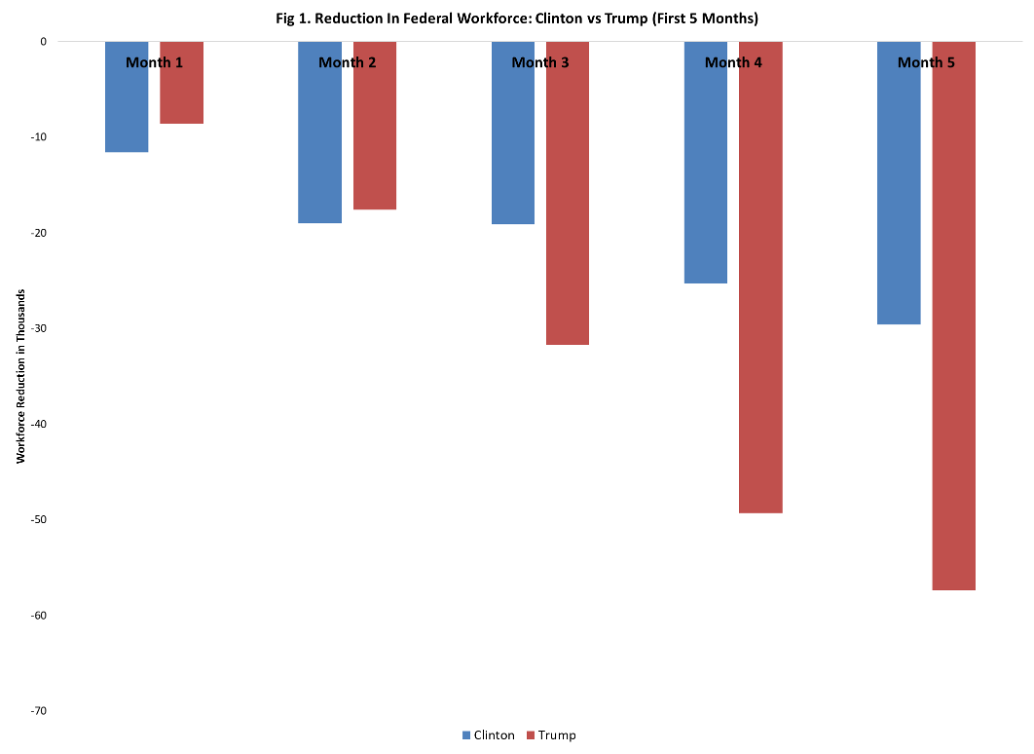Tracking Efforts to Shrink the Size of the Federal Workforce: June 2025 Update
Due to the lack of activity, future monthly updates will be slimmed down and will focus largely on changes in the numbers.
Today’s jobs report marks the fifth Bureau of Labor Statistics (BLS) report to capture at least some of the workforce restructuring and agency-level staffing adjustments initiated after the new administration issued Executive Order (EO) 14210 on “Reforming the Federal Workforce to Better Serve Americans.”
As of June 2025, there were 2.95 million federal government workers, excluding active military personnel. However, 592,900 of those workers were Postal Service employees. Excluding Postal Service workers, there were 2.35 million federal government workers. This is a decline of 8,100 from last month, and a total decline in the federal workforce of 57,400 this year.
Interpreting the Latest Data
Samuel Tombs, chief economist at Pantheon Macroeconomics, has attributed most of the drop to Trump's hiring freeze, "which is preventing many departing workers from being replaced, rather than active job cuts." The hiring freeze executive order, initially implemented in January, was extended in April through July 15. It remains to be seen if this order will be extended further as the deadline approaches.
The Office of Personnel Management (OPM) released data on July 1 showing that the federal workforce declined by about 23,700 workers between September 30, 2024, and March 31, 2025. However, this timeline only includes about two months of the administrations efforts to reduce the size of the federal workforce, and September is not an ideal baseline for measuring the progress. According to the same OPM data, the weighted average salary of all federal workers is now approximately $110,000, slightly up from approximately $107,000 six months earlier.
One federal workforce tracker estimates that so far at least 128,709 workers have been laid off or targeted for layoffs at federal agencies. However, the methodology aggregates different types of job disruptions — announced firings, layoffs, reinstated positions — which represent different workforce outcomes and conflate permanent layoffs with planned, temporary, or rescinded actions.
How Do Ongoing Efforts Compare to Clinton Administration’s Achievements in Shrinking the Federal Workforce?
Reducing the number of federal employees by the same amount that the Clinton administration did during his first term would require shrinking the federal workforce to fewer than 2.08 million workers by 2028. The two figures below show the month-by-month comparison between workforce reductions under the Clinton administration versus the current Trump administration, and efforts so far in relation to the ultimate goal of matching the scale of Clinton’s cuts.
This series covers workforce reductions, agency restructuring efforts, and any new policies or developments related to these initiatives. Stay tuned for regular updates on the Trump administration’s progress toward achieving its federal workforce reduction goals.
You can read my previous updates for February, March, April, and May.




